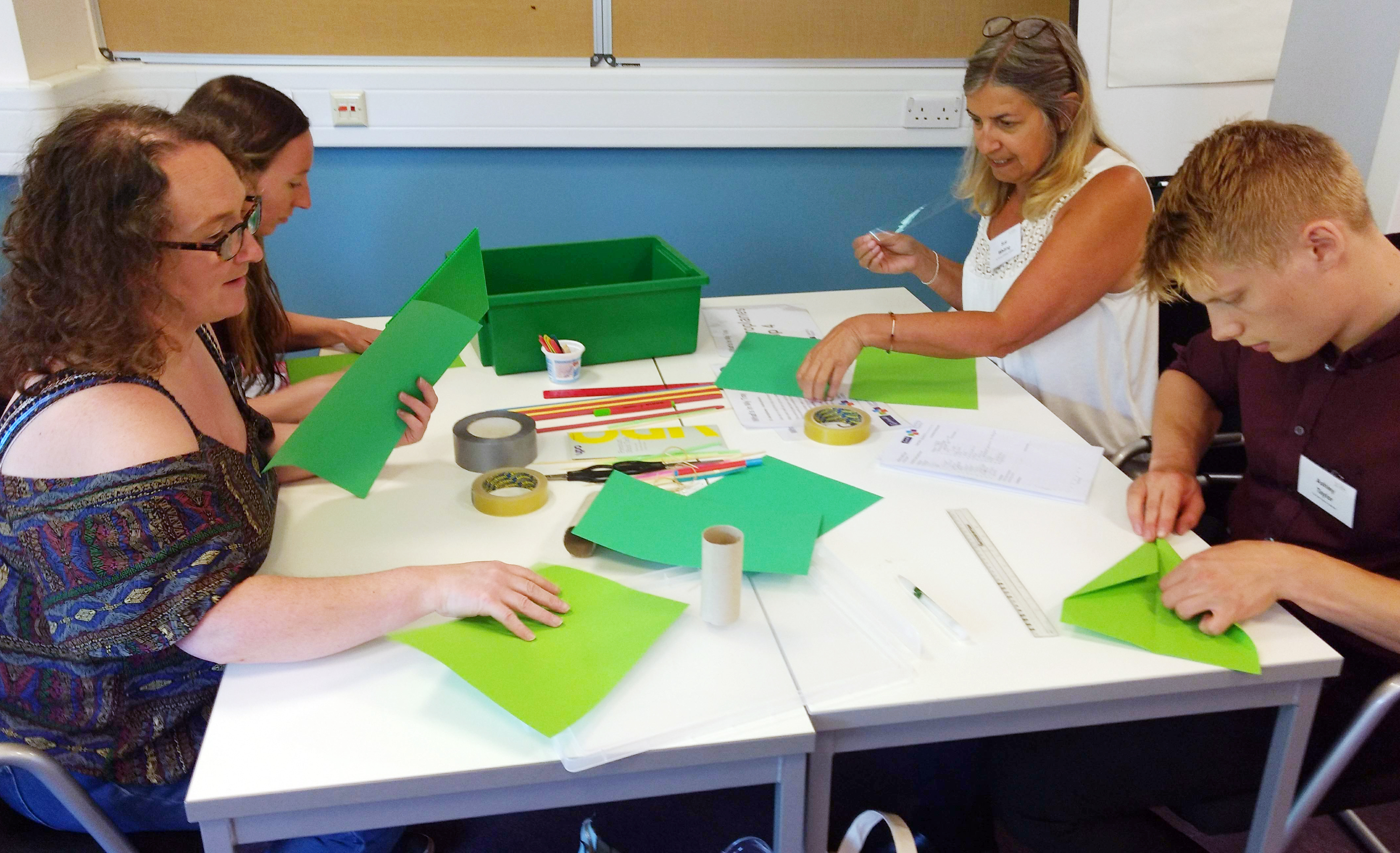STEM aeroplanes
This activity was created as part of a Gratnells What’s In My Tray CPD workshop for secondary science technicians to support practical work and delivery of the curriculum. It can be carried out as a stand-alone activity for students or combined with other activities from the session to form a STEM carousel.
You will need (per team of 4):
- Deep Gratnells tray with lid x 1
- Corriflute (corrugated plastic) ~A5 size x 1
- Drinking straws x 8
- Sellotape roll x 2
- Wooden BBQ skewers x 4
- Sharp scissors x 2
- Duct tape roll x 1
- A4 coloured card x 4
- Cocktail sticks x 8
- Blue tac pack x 1
- A4 coloured paper x 4
- 30cm ruler x 2
- Felt tip pen x 2
- Elastic bands x 4
- Plastic yogurt pots x 2
- Lolly pop sticks x 8
- Art straws x 8
- Wooden clothes peg x 1
- Paper clip x 4
- Cardboard tubes x 2
Tip: if you are running this activity as a team challenge, use different coloured paper and card for each team.
Optional: if you would also like to test the accuracy of your aeroplanes, you can pop a few additional Gratnells shallow (F1) trays or A3 trays on to the flightpath to use as targets. Allocate bonus points for landing in the trays, assign more points to the trays that are smaller or furthest away from the launch line. If you would like to measure the distance travelled by the planes you will also need some long tape measures.
This activity also works as an individual challenge, just reduce the amount of equipment accordingly.
Preparation:
- Place all the equipment into the deep Gratnells tray and put the lid on.
- Put the target trays on the ground in the flight path (optional).
What to do:
- Use any or all of the tray contents to make two aeroplanes of any design.
- Mark each plane with your group’s name.
- The winning aeroplane will be the one that travels furthest.
- Bonus points are available for landing in a tray (accuracy).
- When you have completed your aeroplanes, or when the allocated time is up, put your completed aeroplanes into your tray and put it aside. Flight tests will be carried out as a group once everyone has completed this activity.
- During the flight tests, we will measure or observe the longest distance travelled by the aeroplanes. Winning team (furthest travel) gets 5 points, next team 4 points and so on. Bonus points will be allocated accordingly.
When all participants/teams have completed the activity, conduct the flight tests – all stand in a line facing the same way and launch (throw) your aeroplanes.
What is happening?
Paper aeroplanes are gliders. Put simply, their wings compress the air below the aeroplane creating higher pressure than the uncompressed air above the aeroplane. The aeroplane is able to ‘sit’ on this higher pressure air and glide to the ground.
To make the best paper aeroplane, you will need to consider the following factors:
Aerodynamics – how easily the plane moves through the air, or how much air it ‘pushes’ as it goes. Planes with poor aerodynamics push a lot of air, this is known as drag or air resistance. To fly far, you need as little drag as possible.
Gravity – the force that ‘pushes’ everything to the ground. The lighter something is the smaller the effect of gravity, so it is important to keep your planes as light as possible.
Thrust – the initial thrust comes from the force of you ‘launching’ your aeroplane. It is important to use the right amount of thrust for your plane’s design.
Lift – created when the air below the plane is pushing up harder (has higher pressure) than the air above the plane is pushing down (lower pressure). The pressure difference is what enables the plane to fly. You can experiment with the shape of your aeroplane’s wings to try to create more lift.
To create a long flight, all of the forces detailed here must be in balance. Will your flight be short and fast or slow and gentle? Both could achieve the same distance but just take different amounts of time to get there. The design of your aeroplane will affect the type of flight it can achieve.
Other things to try……
- Use the Gratnells shallow (F1) tray for target practice. Can you get your aeroplane to land in the tray? Experiment with placing the tray at different distances away from you. Do you need to modify your design to make your aeroplane more suited for accuracy rather the distance?
- Decorate your plane with your name, or give the aeroplane its own name, number or logo.
- Make the challenge more exciting by only giving yourselves 5 minutes to build the aeroplanes.
- Have a couple of round robin competitions, flying your planes against each other, to see which aeroplane is best at travelling the furthest and which is the most accurate.
- Discuss the differences in the designs, why were some of the aeroplanes more successful than others? Research different aeroplane designs and learn as much as you can about what is needed for successful flight.
- Modify your design or build a new aeroplane based on your observations and research.
For more images and videos of this activity taken at the National Technicians Conference in York see here.
Health & Safety
As with all Gratnells Learning Rooms What’s In My Tray Activities you should carry out your own risk assessment prior to undertaking any of the activities or demonstrations.


